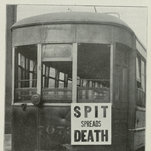
But the child recovered. He grew up, married, worked for 46 years as a printer for The Philadelphia Inquirer, and died at 83. In his retirement, he would sip a coffee
“He would go out to play,” recalled Anthony Coia, 73, “and little Billy wouldn’t be there.”
Ms. Bader Thomas, the retired bond underwriter, is the custodian of the influenza stories passed on by her parents, both of whom grew up around the West Kensington neighborhood.
Her mother, Irene, would tell the cautionary tale of a neighbor, a big, strong German in his 40s, who drove a six-horse wagon loaded with beer barrels. “He was in superior shape to be able to do that kind of work,” said Ms. Bader Thomas, 77. “And he was gone within a couple of days.”
This was one reason Irene’s grandmother, an Austrian immigrant named Bertha, kept all her family members isolated in the house — and they all survived. Irene, in fact, lived to be 104.
Ms. Bader Thomas’s father, Walter, was 17 when he got hired to do a job few wanted: collect the dead by horse and wagon.
“They had to work fast,” she recalled her father saying. “They just threw them in the ground, blankets wrapped around them.”
He and other morgue workers drank whiskey to protect themselves from the flu and, maybe, the memories. But when those memories returned in later years, Ms. Bader Thomas said, her father would be matter-of-fact about even the horrific details, such as burying several babies in a barrel so as to be more efficient.
“It was just: This is what happened,” she said.
“You just go forward,” said Ms. Bader Thomas, self-isolating in her home in a Philadelphia suburb. “You never look back.”